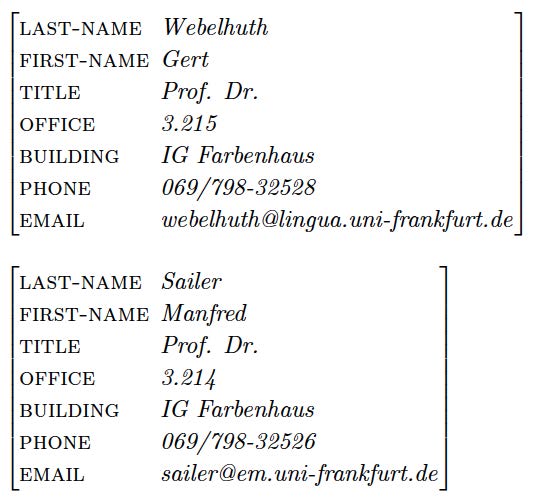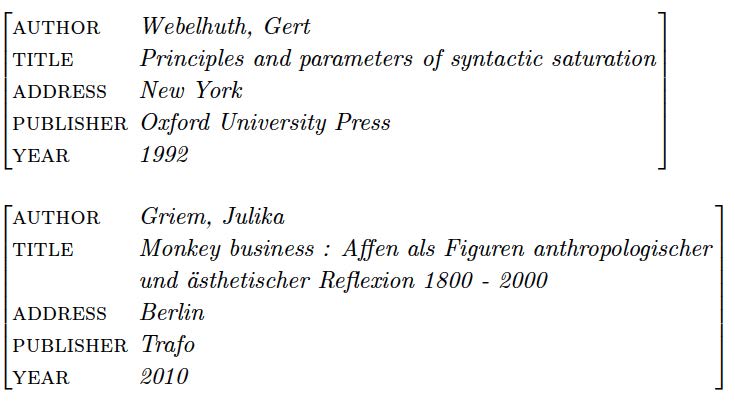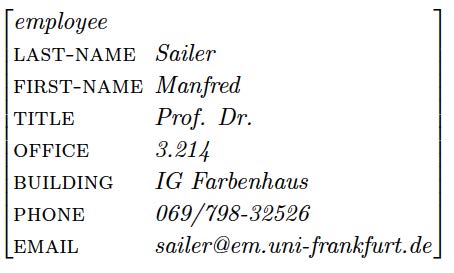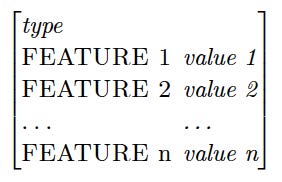Syntax 1 Wiki: misc
A Systematic Way of Representing Information
You have probably encountered the word database. A database is a way of collecting data about objects (people, birds, planets, etc.) where the objects have similar properties (e.g. first name, last name, date of birth, etc.), but different values for these properties. Here are a few examples.
The page QIS-Webelhuth lists some information about one of the professors of the University of Frankfurt. The page QIS-Sailer lists the corresponding information about a second professor. Let us, to simplify matters, extract some pieces of the information from both pages. Then we can represent the information as follows:
We see a table of information enclosed by straight brackets. In the table there are two columns: the first column contains FEATURES of employees of the University of Frankfurt and the second one the values of those features for two employees, Prof. Webelhuth and Prof. Sailer. This description format is called a feature structure for obvious reasons: we describe objects in terms of the values they have for certain features.
Here is a second example. If you go to the online book catalog of Goethe University and type in the two names "Gert Webelhuth" and "Julika Griem", you will find a list of books authored by these two professors. If you click on a link describing one of these books, then the information about the book is also given to you in the form of a feature structure. Using the same format as above, you will find the following two descriptions:
Here is a third and last example. The following description of mobile phones can be found on the internet:
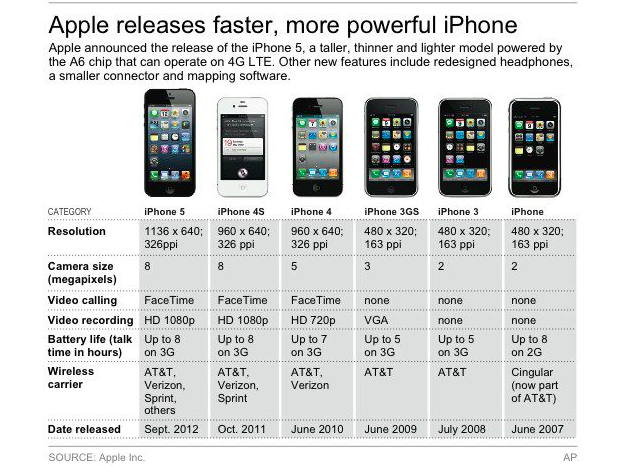
Do you realize that the information above is in the form of a table? In the first column, we find FEATURES of phones and in each following column we find the values for the features of one individual model of phone. It would be easy to represent this information in the form of feature structures.
Types
Look at the feature structures for employees, books, and mobile phones one more time. Since they describe different things, they also contain different FEATURES. The employees have an OFFICE, but the books and the mobile phones do not. The books have an AUTHOR and a PUBLISHER, but employees and mobile phones do not. In contrast, only the phones have the features BATTERY LIFE and CAMERA SIZE. The moral of the story is that the inventory of FEATURES in a feature structure depends on the object that the feature structure is meant to describe. This information somehow needs to be represented in the feature structure as well. To this end, we add a so-called type to feature structures in the top lefthand corner which signals the type of the feature structure, i.e. what the feature structure is about.
The first employee feature structure and the first book feature structure above will then really look as follows:
In general, feature structures will then have the following form:
Navigation:
